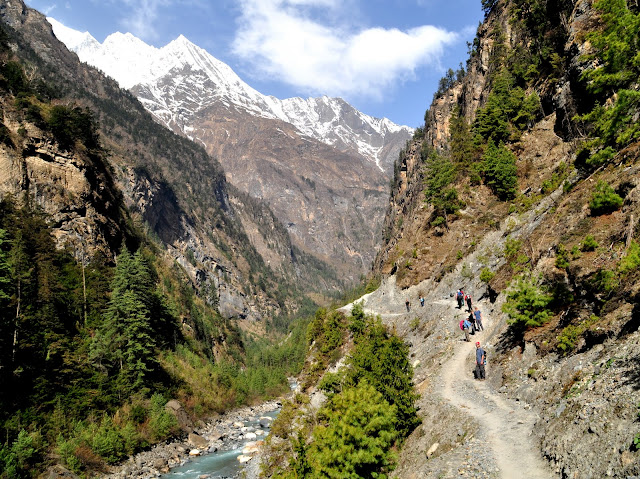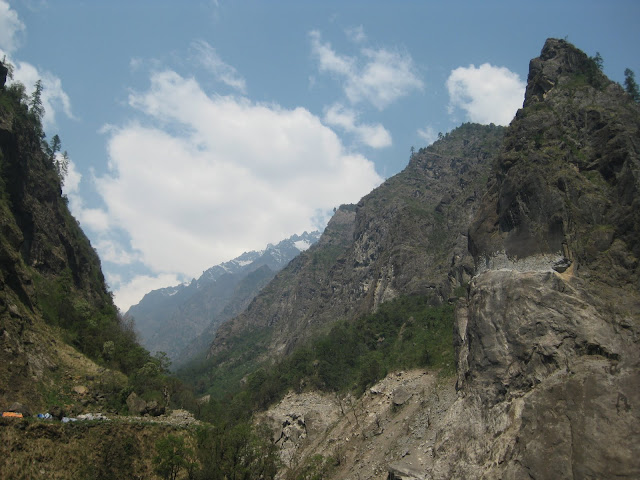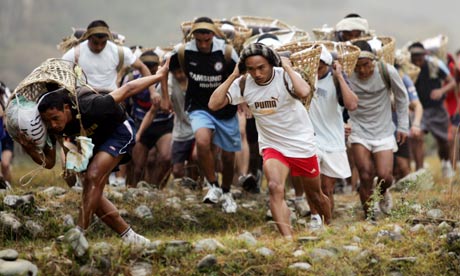 The Annapurna Circuit is experiencing some big changes, thanks to a government-sponsored road and access project. It’s a hotly debated topic among travelers, travel providers, and local communities in the region, most of whom disagree on the necessity and benefits of the road. Check out a post I wrote from World Nomads’ Responsible Travel Blog on the subject.
The Annapurna Circuit is experiencing some big changes, thanks to a government-sponsored road and access project. It’s a hotly debated topic among travelers, travel providers, and local communities in the region, most of whom disagree on the necessity and benefits of the road. Check out a post I wrote from World Nomads’ Responsible Travel Blog on the subject.
The Death of Nepal’s Greatest Trek
For many years, I have wanted to visit Nepal. The massive Himalayan range has beckoned me to explore its peaks and valleys through National Geographic shows, Conde Nast Articles, and travel blog posts. Last month, I finally arrived in my dream destination, and my experience along the famed Annapurna Circuit was nothing short of spectacular. For 11 days, we trekked through picture-perfect river valleys, up and down over high mountain passes, and through remote villages accessible only by foot and donkey. The Annapurna Massif dominated our views throughout the trek, awing us hourly as we followed the trail from east to west. The Annapurna Circuit has rightfully earned its reputation of one of the world’s great walks, and may just top my personal list of favorite treks.

Trekking along the Annapurna Circuit
But I got there just in time. See, from a trekker’s perspective, the Annapurna Circuit is doomed. The entire circuit, once a 3 week endeavor, has already been shortened to 11 days due to a road that opened up in 2008 along the Kali Gandaki (western) valley. Now the eastern side is in jeopardy, as road construction slowly makes its way up the Marsyangdi valley. Within 3 years, the trek will be cut short again, this time down to only 4 days of trail without a road. What was once an epic, multi-week adventure into alpine wilderness and remote villages will be cut down to a mere long-weekend trip for anyone with access to a good jeep. Trekkers around the world are lamenting about this dark development of one of the world’s best playgrounds.

Road construction - blasting out of the sheer rock faces to make room for vehicles
Upon learning of Annapurna’s bleak future, my first reaction was disappointment (after all, I am a trekker!). My second thought was for the now-thriving trekker tourism industry, and how massively debilitating such a move will be for the local communities who rely heavily on trekker dollars. The Annapurna Conservation Area (ACA) is Nepal’s most popular trekking region, with 60% of trekkers spending their holidays here (that’s over 60,000 visitors per year). There are over 1,000 lodges and teahouses throughout the ACA, and thousands more who rely on supplying goods and services to lodges and trekkers. No doubt that these individuals and businesses will encounter a big loss as trekker numbers dwindle over the coming years.
But taking a further step back, and forgetting about my own selfish reasons for wanting the trail to be kept intact, it becomes apparent why such a road is not only important, but necessary for the livelihoods of the rural Nepalese:
- The cost of goods, commodities, and services in these remote villages is very high because of a lack of transportation infrastructure (everything must be carried in by hand or animal). Access to simple daily items is currently cost prohibitive for many people.
- Access to health care in these villages is extremely limited, and many people suffer greatly because they cannot manage the multi-day walk to the nearest clinic (or cannot afford to have someone carry them)
- While many villagers work in tourism-related businesses, many more work in agriculture. As people transition away from subsistence agriculture and towards cash crops, they need access to markets to sell their production.
- Food security, access to energy, and the development of hydropower will all come with road development.

Trekking where the road will never go - Approaching Thorong La Pass
The road development could even be good for Nepal’s tourism industry – even the poor trekkers. A shorter, more accessible Annapurna will draw a different kind of tourist – one that is limited on time, though likely less limited financially. A higher-end tourism product will emerge with accessibility, with higher volume potential, bringing more tourism dollars to a smaller area. Good for everyone – certainly not. But an overall increase in tourism dollars to Nepal – likely. And the trekkers, we’re an intrepid bunch, and new great walks will arise. For one, the Annapurna Base Camp trek – an 8-day walk into the heart of the massif – will be unaffected by the road. But better yet, this is an opportunity to spread the benefits of tourism further afield to other regions, to find the undiscovered gems of a country that has more alpine trekking potential than some continents. We may be witnessing the end of the Annapurna Circuit era, but certainly not the end of amazing trekking in Nepal, and local people will live better lives as a result.

